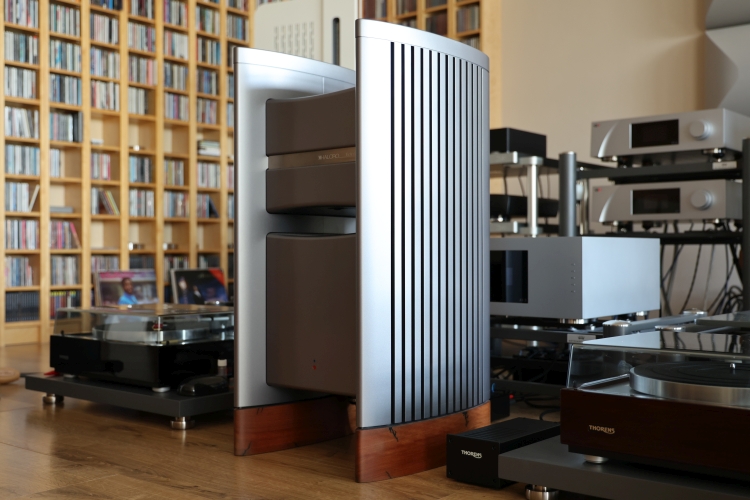
Stereo/Mono
The Eclipse Stereo produces 180 watts per channel into an eight-ohm loudspeaker and 350 watts per channel into four-ohms. The Eclipse Mono produces 300 watts/per channel into an eight-ohm loudspeaker, 550 watts/channel into four-ohms with a peak power of 2.1kW.
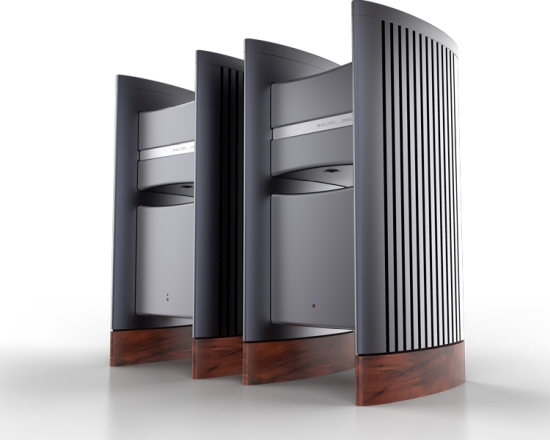
The Eclipse Stereo offers three input modes:
– An unbalanced voltage mode input with an impedance of 22 kOhms
– A balanced voltage mode input with an impedance of 22 kOhms + 22 kOhms
– A minimal path voltage mode with an input impedance of 660 Ohms
The Eclipse mono has the same inputs and adds a current-mode input with a 60-ohm input impedance (infinite-impedance current source).
For this review, I used the balanced input exclusively.
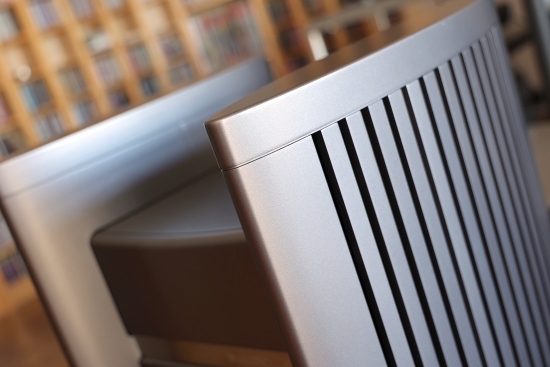
Aesthetic
There’s no way around it: Halcro products look truly unique, and chances are they are quite the opinion-dividers. The design has a strong Sci-Fi vibe, and I love it. There’s no other place for this amplifier than the floor, but even then, placed between the two speakers, the amplifier is visually dominating.
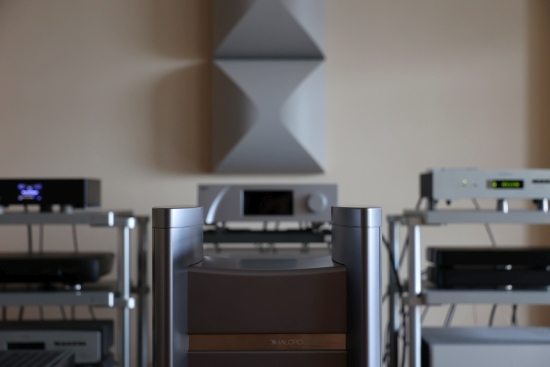
At 40 cm wide, 40 cm deep, and 79 cm tall, the Eclipse is significantly wider and twice as deep as a Magico S1 MkII speaker and taller than the 3-level Artesania Exoteryc audio rack, which it almost completely blocks from view. So, this is a beast of an amp, but even so, I absolutely dig it. This is an amplifier that makes no excuses for what it is: a no-holds-barred design where form 100% follows function. But in spite of its heft, the Eclipse is beautifully elegant.
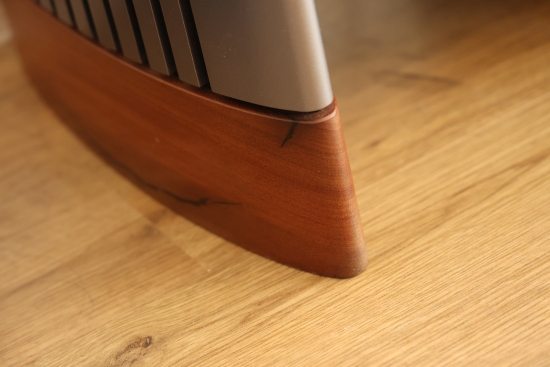
The amp comes in a very clever 3-piece flight case with detachable sides to allow it to be installed without having to lift it all the way up and out of its case. Given its weight of 62 kg, however, you better bring an extra pair of strong hands to help unpack and install it. Once the amp is on the floor, though, it is very easy to move around by one person, especially on a laminate floor.
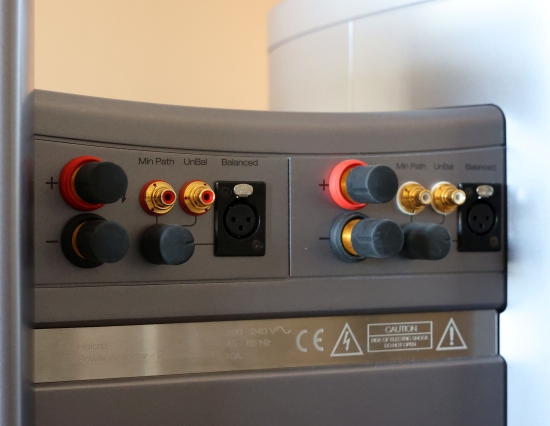
Speaker Cable connection
As can be seen above, there is not much room to connect speaker cables, and each channel’s two leads effectively need to be routed either above or below the input connectors and selector knob. The Jorma Unity cables did not pose a big challenge, but thicker and less flexible cables can become tricky to connect. In checking with Halcro if this orientation is a conscious design effort, perhaps done for audiophile reasons, Mike Kirkham, Sales Director, confirmed:
“There is little scope to move the speaker terminals on the stereo amp. The output inductor and the shielding between it and the input stage prevent movement. So it is true that they are placed there for sonic reasons.”
Finish
All models are available in two external chassis finishes. The Standard version’s chassis is powder-coated. The Signature version is available on special order. For this version, the chassis has a special, high-quality painted finish. This finish is very expensive to fabricate, which explains the 8.000 euro price difference.
Future Products
Halcro is also working on a successor to the DM10 preamplifier called the Equinox. As it stands, I have no further information on this.
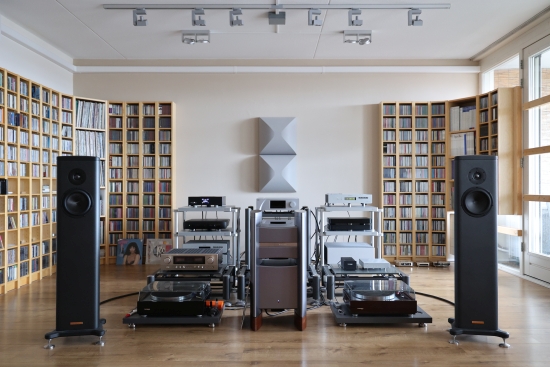
System Context
The Halcro Eclipse stereo power amp will be listened to in my main system, consisting in the basis of the CH Precision C1.2 DAC, L1 preamp, and A1.5 power amp with the Magico S1 MkII speakers. The main digital sources are the Grimm MU1 and Antipodes Oladra music servers and the Aqua La Diva M2 CD transport. Speaker cables used are the Jorma Unity. Interlinks are the balanced (XLR) Driade Flow Link Reference 808. The CH system sits on Artesania Exoteryc and Aire racks, while the digital sources and most review components sit on HRS EXR racks. Due to its size, the Halcro amp will simply be placed on the floor.
Setting the Stage
The only occasions where I heard the original Halcro amplifiers are show demos, such as the ones Terrason owner Bert Bazuin hosted with Vivid Audio at the iEar show, among others. As such, I don’t have the required personal knowledge to make any references as to how the old and new models compare.
To whet the appetite, Marc Loubeau, the organizer of this review, mentioned that the new generation offers all the qualities of the previous models in terms of transparency, absence of distortion, etc, but infused with a more “musical” and emotional touch. He is not alone in feeling this way, though, as this sentiment can be read in more online publications, which leads me to believe that some may have found the original model to sound somewhat sterile. Well, upon listening to the Eclipse in my own system, I can say right away that there is absolutely nothing sterile about the new Halcro amplifier, quite the contrary!
Warm Up
I was forewarned that the Eclipse amplifier needs some warm-up time after having been fully switched off and cooled down entirely. Bert Bazuin of Terrason Audio mentioned it really needs about one day to get on steam fully, adding that one might even wonder what makes the amplifier so very special when listening to it after it has just been switched on. Once it has reached its optimum performance level, it will retain it. Although the amplifier can safely be left switched on indefinitely, one can also use the pneumatic switch on the underside of the top module to activate standby mode, after which it recovers in 30 minutes to an hour, which is entirely normal for a power amplifier.
Next: Listening and Conclusion
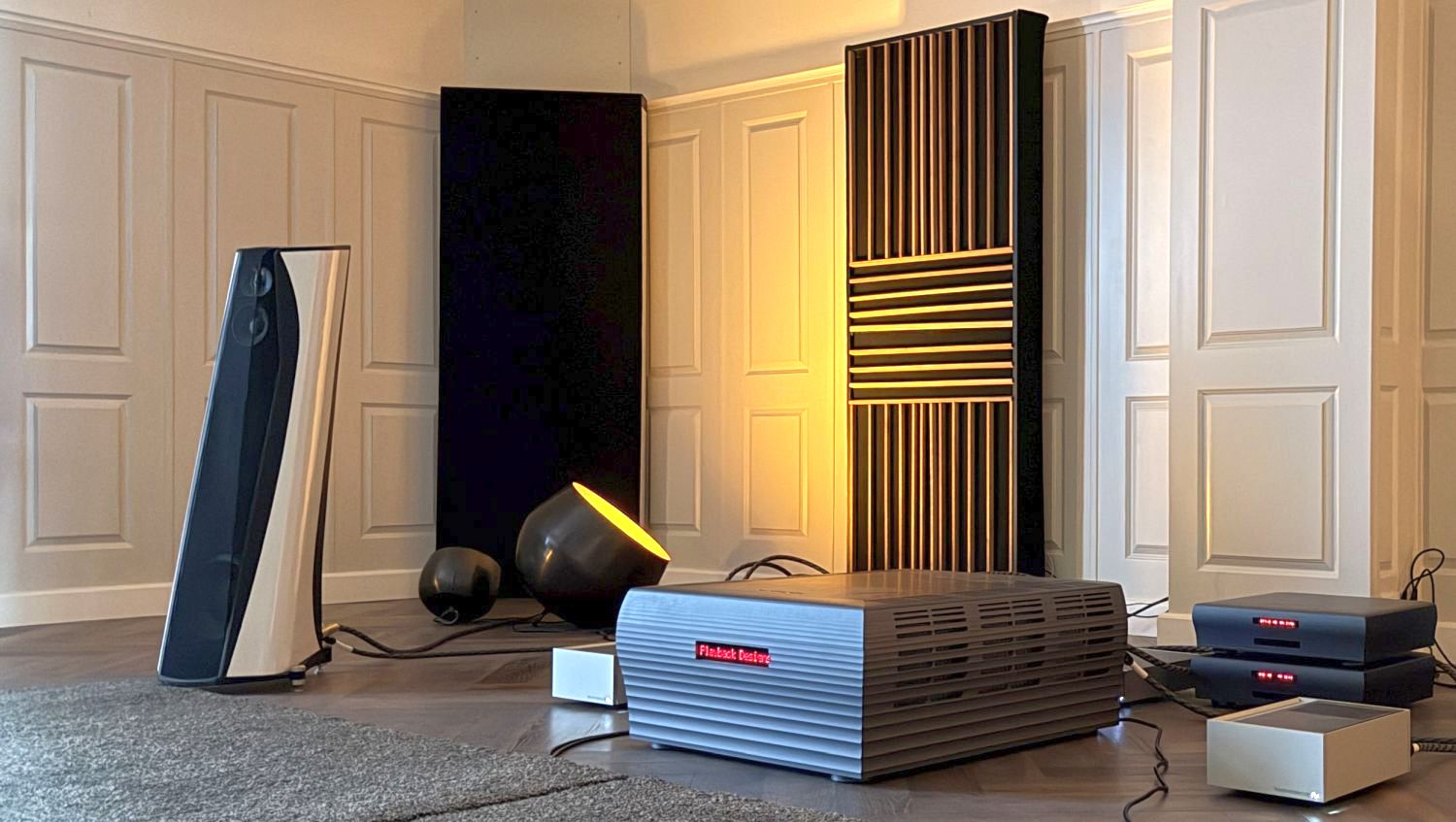
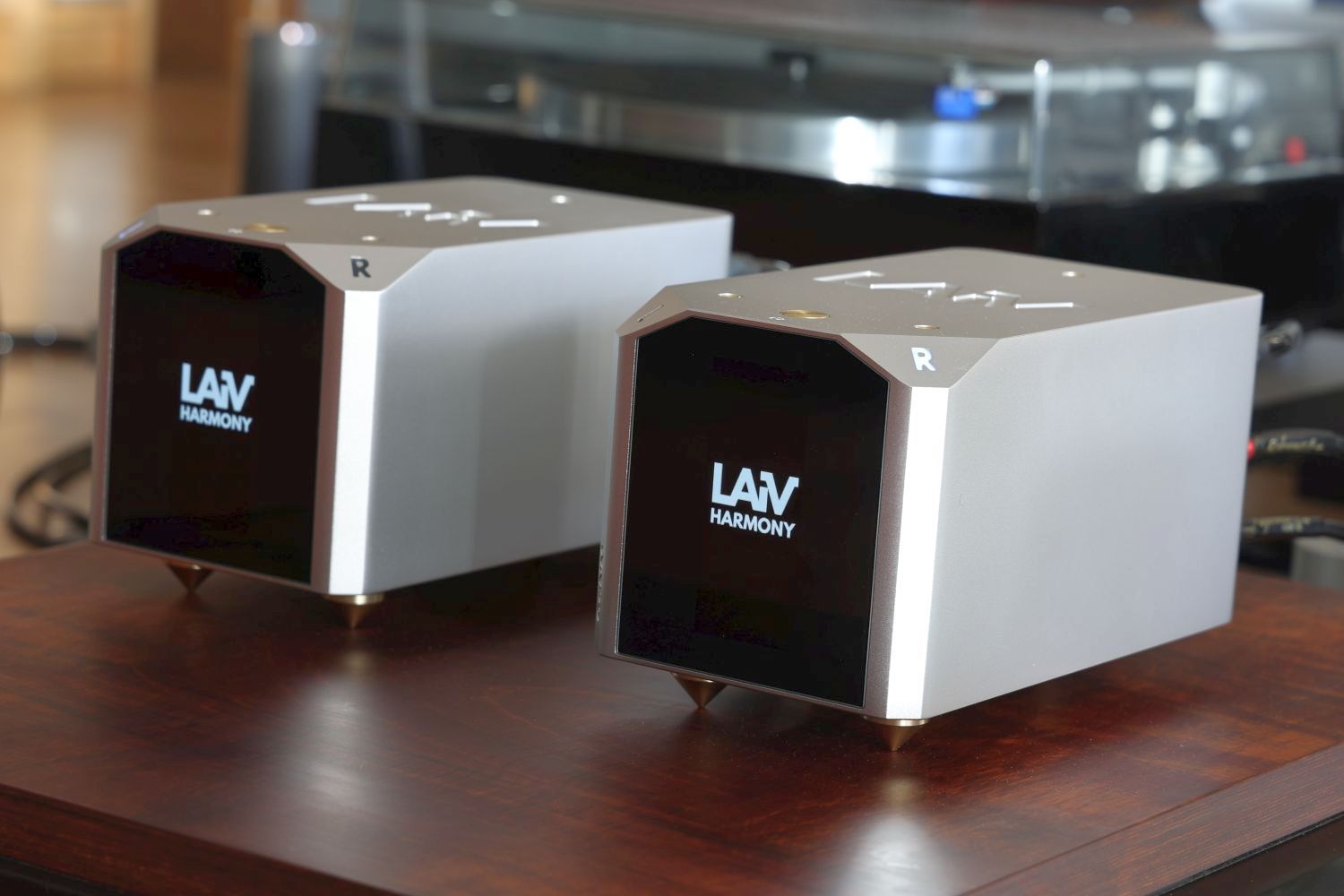
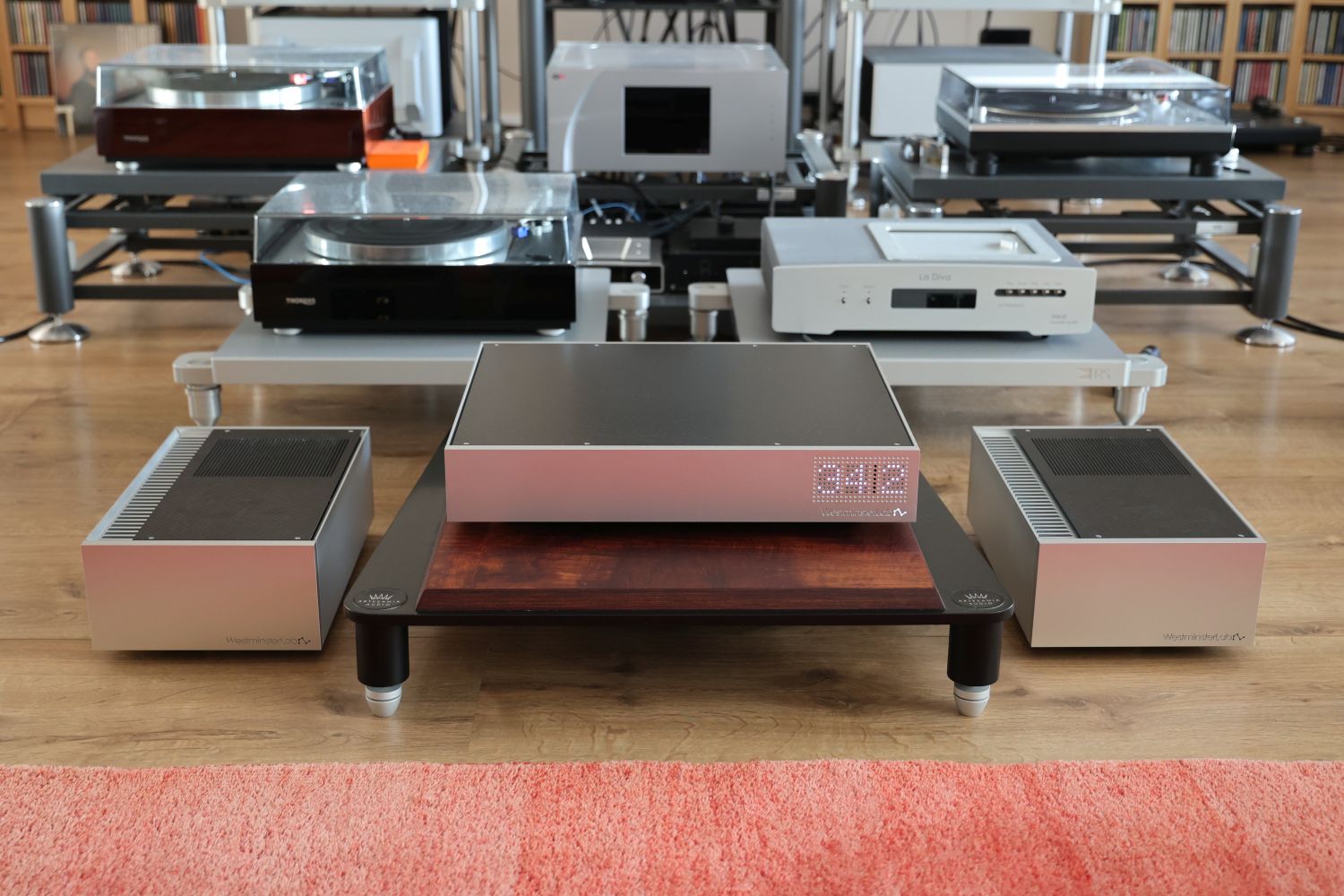
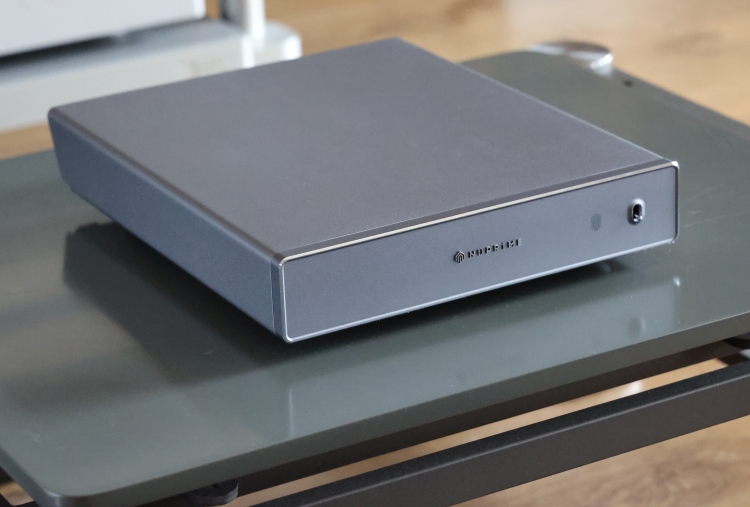
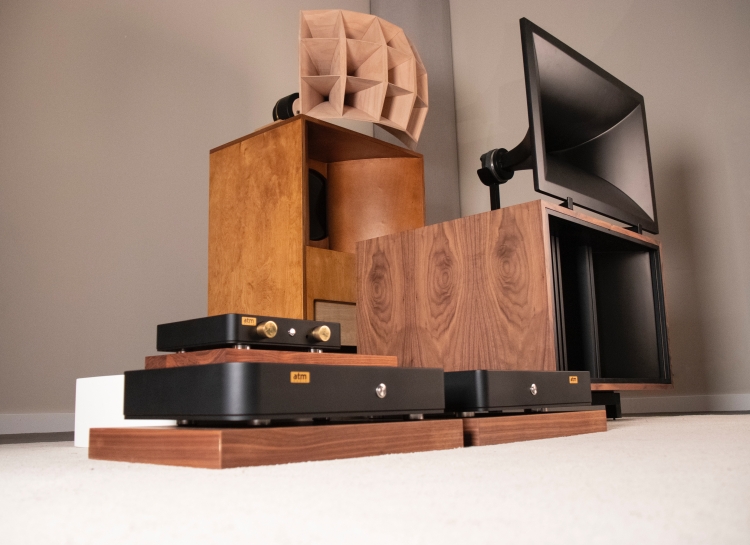
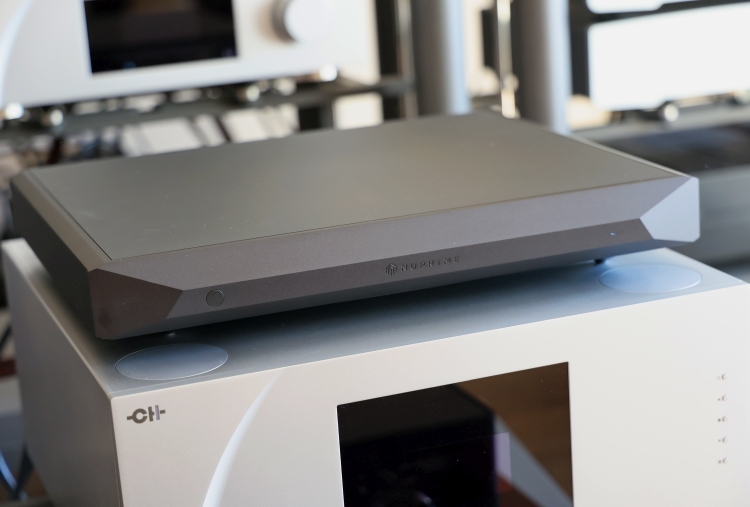
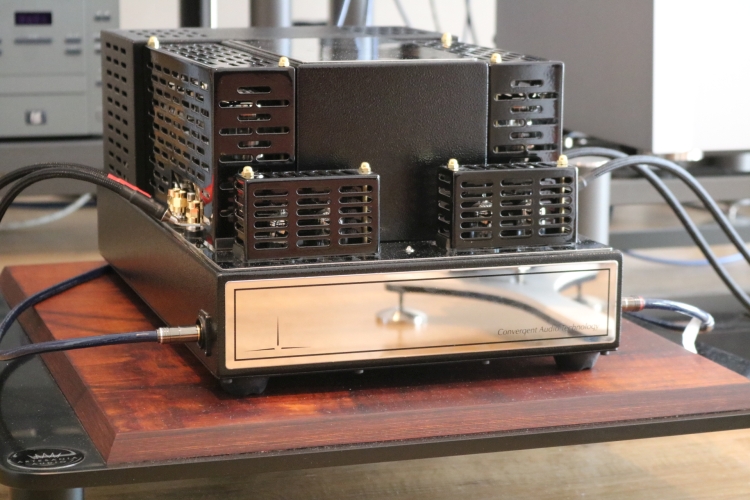
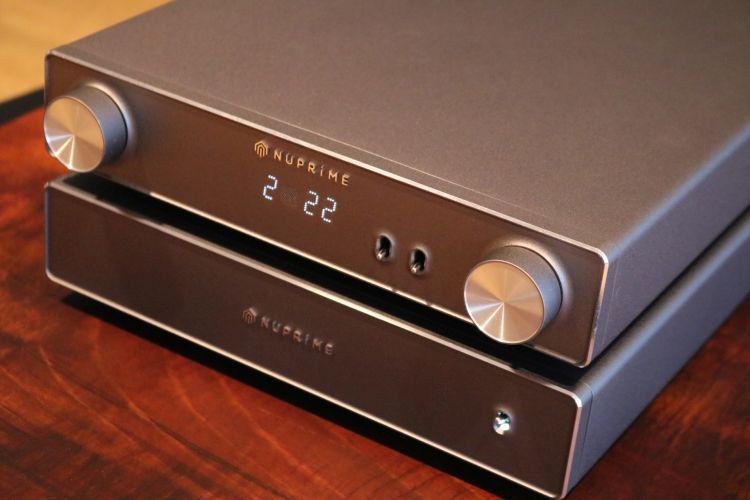
Halcro may claim that the current limitation on the amplifier has no effect in real life, but my experience is the contrary: current limited amplifiers do not drive “impedance challenged” loudspeakers very well. I confirmed this by listening to the original Halcro DM58 monoblocks many years ago trying to drive the original Sonus Faber Extremas, and not succeeding very well, over a period of two weeks in my system at that time. HiFi News May 2023 reviewed the new Halcro Eclipse, and confirmed a maximum current of only 10.4 Amperes. In my experience, a top of the line modern monoblock with pretensions to be able to drive difficult speakers (and let’s face it, many of the top models today are difficult to drive) should be able to output a maximum current of at least 50 – 60 Amperes. I note as an aside that even the integrated amplifier Musical Fidelity Nu Vista 800.2 (tested by HiFi News August 2023) is capable of outputting 46.9 Amperes.
Fascinating review thanks Christian. I remember reading about Halcro way back when nice to get the whole story.
Hi Christiaan, ever considered reviewing one of the Pilium amps?
Good suggestion! I got interested in these amplifiers after hearing the combination with the Magico S3s last year in Munich where it seemed like a great pairing. I was actually considering looking into reviewing them but other work got in the way. I guess I’ll have a chat with the local distributor to see if we can organize a review.
I just heard the Halcro driving a pair of Estelon X Diamond MK II’s to highly realistic levels. The Estelons definitely require a very firm grip and I can confirm that the Halcro did not only sound jaw-droppingly good, but also drove these demanding speakers incredibly well, with total control even on complicated tracks with huge dynamic range. This amplifier is an absolute winner. I can only begin to imagine what two of them can do …
In Munich, I heard what the pair can do, combined with the new Equinox preamp and the new Marten Coltrane Quintets, adn it is quite the match made in heaven! You can read more about this in the Munich High End 2024 Show Highlights that I published today.